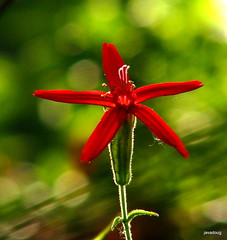Fantasia, the name itself is a musical enigma. The original 1940 version I saw when I was a kid, and I saw it again with my daughter. Fantasia 2000 was one of the first DVDs that we owned, before that it was VHS tapes. We were thrilled with both movies, seeing them again and again. Welling up with nostalgia I relived these emotional memories with the Pittsburgh Symphony Orchestra and guest conductor Ward Stare at Heinz Hall on Saturday evening.
The large screen above the orchestra was the programmatic element that enhanced the experience to amalgamate the senses beyond mere musical. Perhaps Walt Disney understood this when he began and sustained this experiment with Fantasia. The creativity of the animators to invent entertaining animation stories based on the music composed perhaps a century or move before was the impressive chord struck as I watched and listened. I also noticed the 4:3 aspect ratio of the original movie, and realized that the wide screen aspect we have today really does paint a more interesting picture. Instead of wishing that the original was wider, I rather realized I should be glad because what I was watching and hearing was divine.
Centaurs frolic as Beethoven's sixth symphony almost literally comes to life. This time with the PSO I realize it's much better than any concert experience with the original score sound track could ever be, even with sixteen surround sound speakers throughout. With shooting stars and live music, you won't hear these compositions played any better than right here with the Pittsburgh Symphony Orchestra. Ultimately having the musicians perform produces an infinitely better viewing experience.
Thunderstorm: Allegro, as movement four proceeds I literally can't take my eyes away from the screen, even though I want to view the orchestra as well.

Happy Grateful Feelings after the Storm, yet I have those same feelings just being here for the full experience.
As I listen to then ending of the Beethoven Pastoral Symphony, I'm thinking of a native wildflower I observe every Spring in May: Firepink my native child, briskly waving free and wild, return again to me. My fervent though of thee, flying down the lane so wild on my bike to see.
Next comes a famous composition that most people have heard and seen in one form or another: Tchaikovsky's Nutcracker Suite. Here the creativity of the animation is spectacular, each segment getting a new flavor with the name of the movement being preeminent to the form. Each selection sees nature come alive as a spell of fantasy spreads magic throughout the natural world with dancing Sugar Plum Fairies, Mushrooms doing their best Three Stooges impression in song, and the final Waltz of the Flowers, in this instance Summer becomes golden Autumn, and eventually the fairies ice skate their way into Winter. In the music I'm fascinated that I hear nuances never heard in the original film, subtle parts I want to hear again.
Micky Mouse was the inspiration for Disney's Fantasia, and he comes to life with Paul Dukas "The Sorcerer's Apprentice." I'm left wondering: which came first, the composition or the film? I know the answer, yet it's amazing how well the music fits the animation and vice-verse. Even down the the final part where the sorcerer pats Micky on the behind with the broom as he sheepishly walks away, as if the thud provided by the orchestra was written specifically for that ending scene.

After intermission comes the fun Ponchielli piece "Dance of the Hours" with dancing animals including Ostriches, Hippos, Elephants and Alligators, the villain being the Alligators. This makes me smile as I sit back and enjoy the music.
Debussy's "Clair de lune" was cut from the original movie, yet the PSO brought this beautiful pastoral piece to us with a lush live rendition of this slow music, this being a treat in that I don't believe I've ever seen it before. This time it was with two egrets elegantly souring above the swamps, and together on into the distance.
Finally, two pieces from Fantasia 2000, Elgar's Military March and Stravinsky's The Firebird brought this spectacular evening to a roaring conclusion, two of the best animations from that film. The Elgar with Donald Duck being separated from Daisy Duck while filling the Arc with the animals, and then being reunited at the end. This was emotional and well thought out.
The Firebird kindled a vivid journey through nature's regeneration after a volcano, well done again and well appreciated, the melody ran strong in my head well after the concert. Just as with the movie, being there made me feel as though I was standing at the podium with the conductor. "Again"-"Again", I want to see and hear it again and again.







